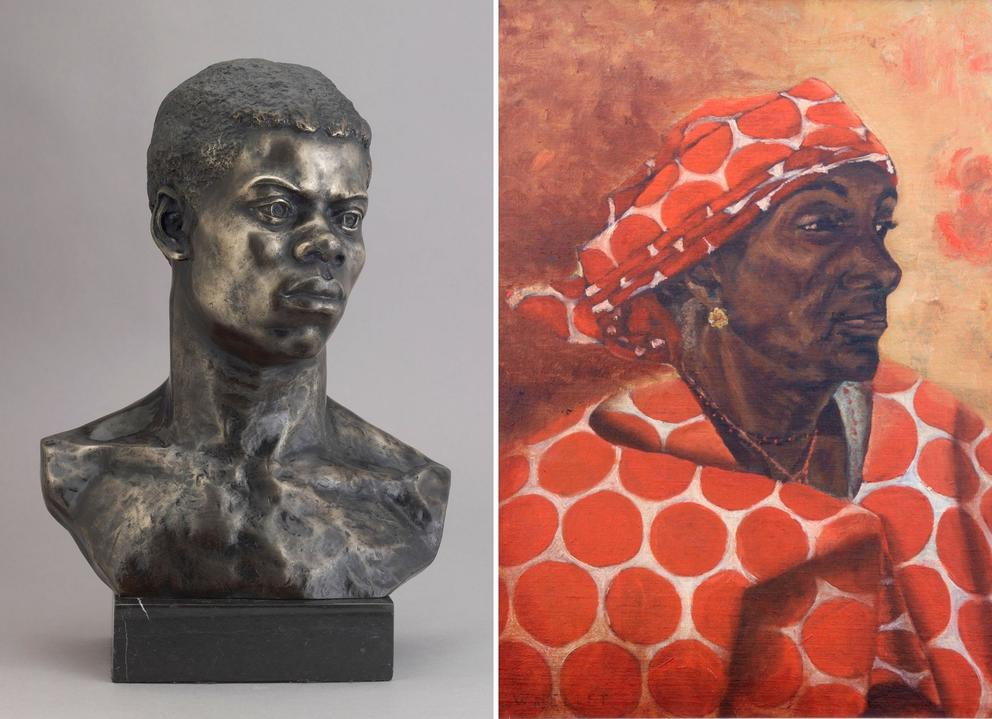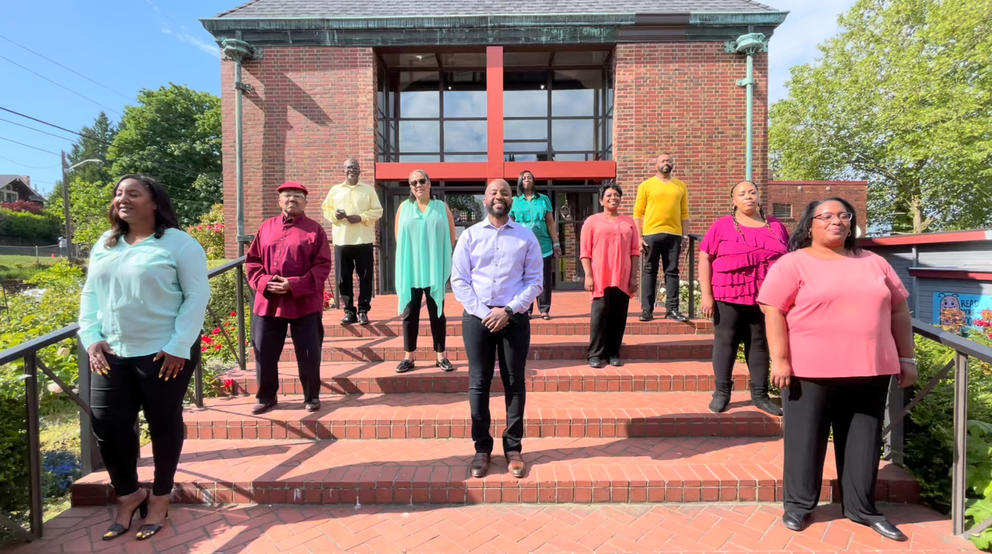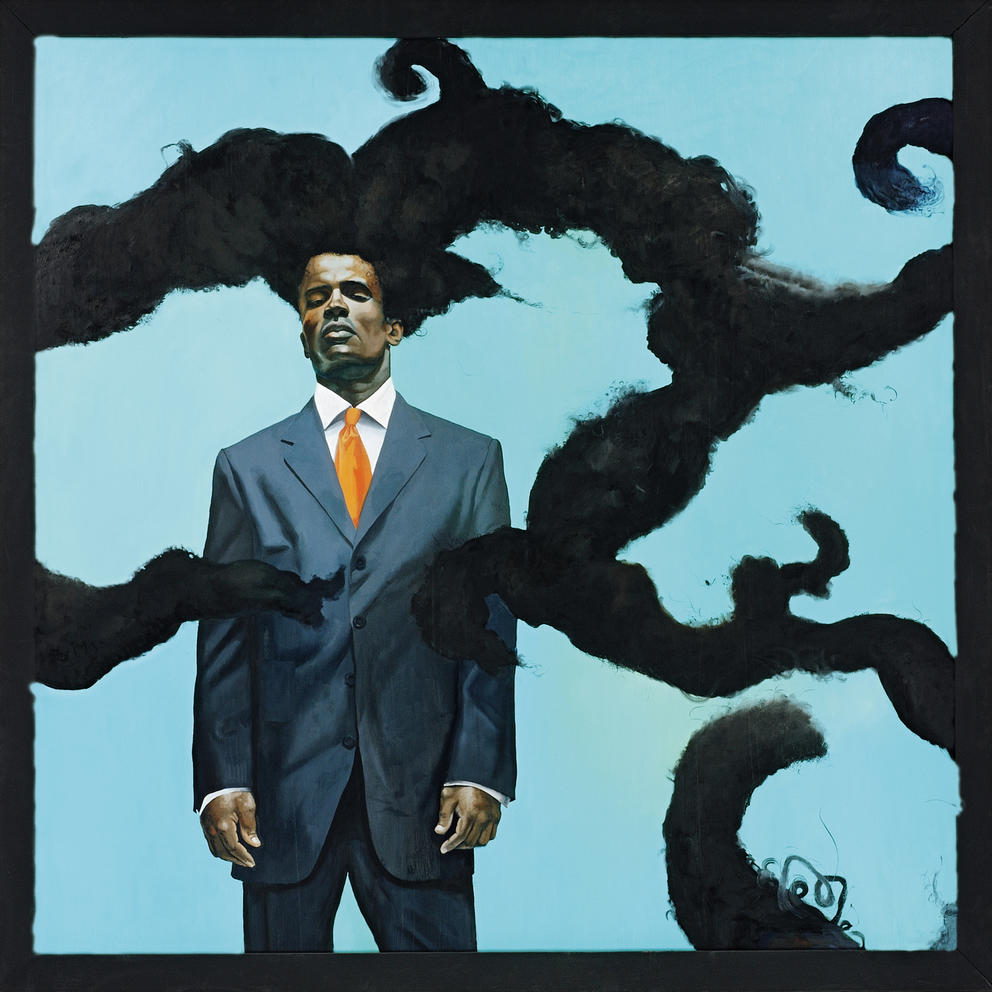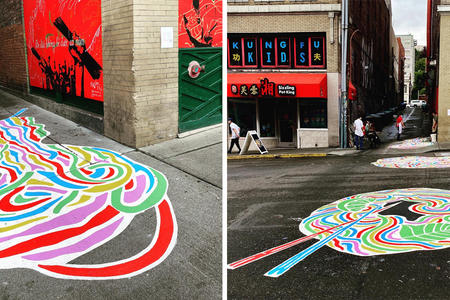Harboring a passion for painting, he sold the business and traveled across the West in the 1880s, capturing the spectacular natural beauty of places like the Cascade Range, Columbia River, Yellowstone National Park, Mount Hood, several views of Mount Rainier (then called Mount Tacoma) and an unnamed waterfall that looks a whole lot like Snoqualmie Falls.
ArtSEA: Notes on Northwest Culture is Crosscut’s weekly arts & culture newsletter.
Brown is now recognized as the first African American to paint the Pacific Northwest. And as Black Past, the Seattle-based history organization, notes, he lived his adult life passing as a white man.
I learned about him just yesterday, thanks to news of an extraordinary new exhibit coming to Tacoma Art Museum next month. The Kinsey African American Art and History Collection (July 31-Nov. 28) consists of more than 150 works collected by Shirley and Bernard Kinsey (over some 50 years of marriage) and curated by their son, Khalil. In addition to artifacts that illuminate African American life as early as 1595, the contents include rare paintings, sculptures, photographs and books created by Black artists starting in 1865.
In a video conversation with the Kinseys, Bernard explains that the collection of these important works — by notable artists most people have never heard of — is an effort to dispel what he calls “the myth of absence,” the assumption that Black people weren’t involved in wide swaths of American cultural history. “African Americans are invisibly present in America,” he says. “We’re just not part of the narrative.” This is especially evident in dialogue about 19th century art.
My excitement grew as I browsed through the collection online (an excellent Juneteenth weekend activity to tide you over until the exhibit opens) and encountered many artists I wanted to learn more about, including turn-of-the-century sculptor May Howard Jackson and Harlem Renaissance painter Laura Wheeler Waring.
“We want people to say, ‘Wow, I didn’t know that,’ ” Khalil Kinsey says in the video. But in addition, the goal is for audiences to “learn, use and teach.” To turn the myth of absence into an acknowledgement of presence and persistence.
Similarly, during the protests against racial injustice this past summer, it became apparent that a great many Americans were scantly (if at all) informed about Juneteenth. Marking the end of slavery in Texas in 1865 — nearly three years after the Emancipation Proclamation — Juneteenth became a Washington state holiday last month and, as of today, it is also a federal holiday.
The Northwest African American Museum has been celebrating all week, including by establishing its own gospel choir, the African American Cultural Ensemble (aka ACE). You can read Crosscut reporter Margo Vansynghel’s story about the origins of the group and listen to the debut performance, the first of several planned for this year.
Also on NAAM’s roster of events: The Juneteenth Artist Collective, a virtual broadcast of a juried slate of local Black artists performing songs, poetry, dance and music (streaming June 18). Winners selected from each artistic category will be invited to perform at NAAM’s Juneteenth Jamboree (June 19, noon-6 p.m. at Judkins Park).
And there are so many more ways to celebrate!
Focus: with A Walking Meditation for Black Liberation, guided by Nile’s Edge Healing Arts (June 19, 10 a.m.-1 p.m.).
Listen: to the launch of Unmute the Voices, a new radio broadcast from esteemed Seattle violinist Quinton Morris, showcasing BIPOC musicians who write and play classical music. (June 19, 3 p.m. on KING-FM).
Party: at Wa Na Wari art collective, with live music by the BluMeadows Trio (June 19, 6-7:30 p.m.).
Groove: to the sounds of Grammy-winning bass player Christian McBride, hosted by Seattle Repertory Jazz Orchestra both live at Benaroya Hall and livestreaming (June 19, 7:30 p.m.).
Read: Arté Noir, a newly launched monthly newsletter about Black art and artists, by longtime Seattle arts maven Vivian Phillips.
Gather: for an outdoor Market and Mixer, featuring locally made art, specialty foods and music, organized by restaurant Communion and the Liink Project, a new art/community space (June 19, 1-5 p.m. at Liberty Bank Building).
Tune in: to KEXP radio’s on-air celebration of Juneteenth, with sets by DJ Riz, Larry Mizell Jr., Vitamin D, Almond Brown and Eva Walker of the Black Tones.
And there’s yet another excellent way to celebrate the intersection of Black art and Black history: Spend an afternoon soaking in the remarkable works in Black Refractions: Highlights from the Studio Museum in Harlem at Frye Art Museum (through Aug. 15; entry is free, but due to reduced capacity you’ll want to reserve a timed ticket online).
This enlightening show features stunning works by contemporary artists including Kehinde Wiley (his evocative “Conspicuous Fraud Series #1, Eminence” features a business-suited Black man whose hair is pursuing a path of freedom), Kerry James Marshall, Wangechi Mutu, Mickalene Thomas and Carrie Mae Weems, plus Seattle artists Noah Davis and Jacob Lawrence.
But I was most taken by artists whose names I didn’t recognize — such as 1960s abstract painters Betty Blayton-Taylor, an activist who co-founded the Studio Museum, and Alvin Loving, the first Black man to have a show at the Whitney Museum, and whose bold geometric colors outstep their prescribed borders.
I was also delighted to discover “Echoes of Harlem,” a quilt by Faith Ringgold (born in Harlem in 1930). I know her as the author/painter of the beautiful Caldecott Honor-winning children’s book Tar Beach, and I was happy to learn she is also revered for her narrative quilts. This one was her first, made in 1980 in collaboration with her mother (1950s couture designer Willi Posey), and featuring four distinct fabrics and 30 different faces representing the varied life stories of Harlem residents.
Ringgold’s work builds on the African American quilting tradition, most famously represented by the quilters of Gee’s Bend, the remote Alabama community where descendants of enslaved people started making inventive geometric quilts in the mid-1800s (and likely before) — art created from scraps, for the very real need to keep warm.
In Seattle, you can see a Gee’s Bend quilt in person at the Henry Art Gallery (now through Oct. 3). Quilter Mary L. Bennett made “Housetop” — nine block variation in 1975, using a technique (blocks built around a central patch) passed down for generations. It’s a physical embodiment of the long history of Black Americans creating art under oppression — of art as resistance and survival and cultural continuity — and a fitting way to commemorate Juneteenth.
Get the latest in local arts and culture
This weekly newsletter brings arts news and cultural events straight to your inbox.










